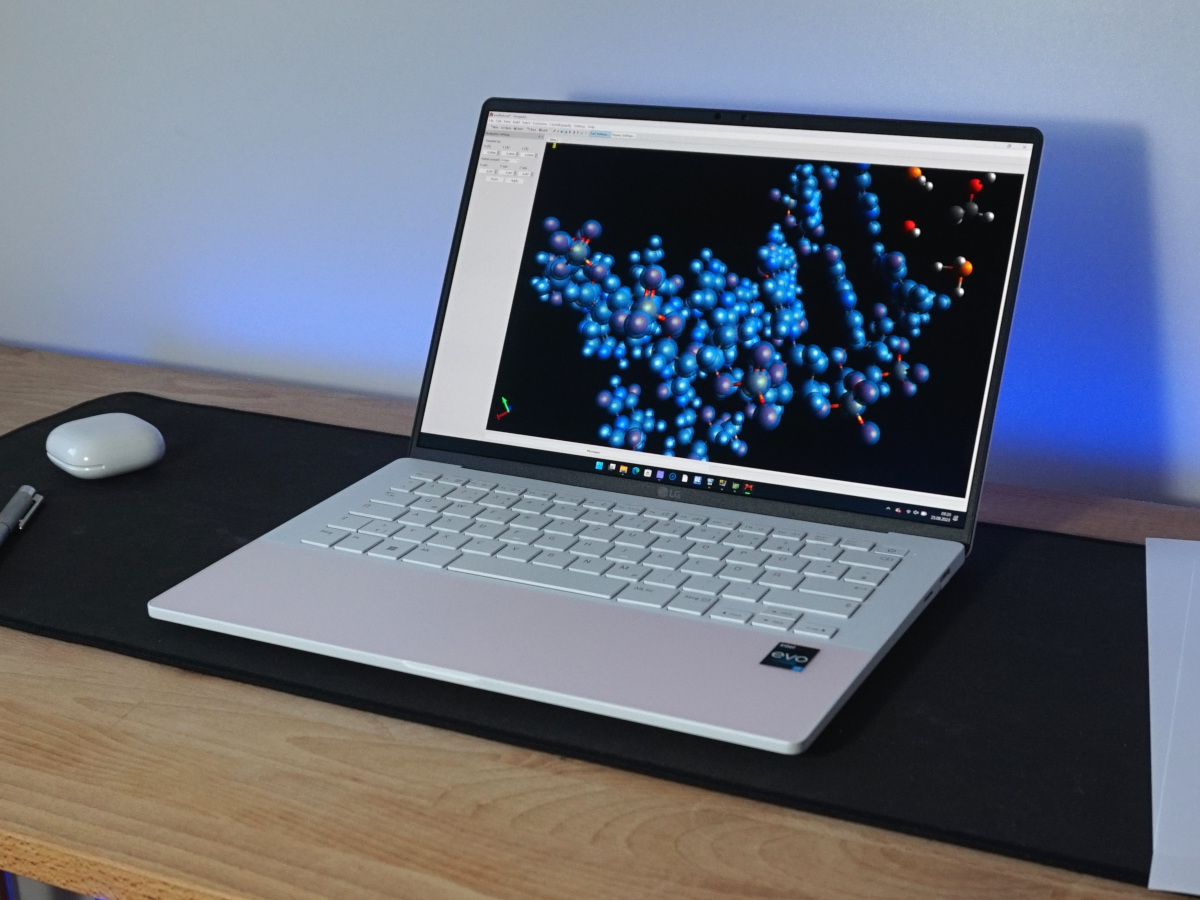The subnotebook from LG already shows off its first highlights while it is still turned off. The palm rests and display lid shimmer in various colors, changing their appearance depending on the light sources and angles. While the case stands out, the touchpad remains invisible at first glance.
Only after turning the laptop on, will you be able to see the white light bars delineating the edges of the touchpad. But your eyes will quickly wander to the display. OLED and a 2,880 x 1,800 pixel resolution result in extremely sharp and vibrant images that are rich in contrast and color. LG is also able to raise the OLED typical PWM flickering to a frequency of 350 Hz, so only very few users should still be able to notice it anymore.
The construction requires some compromises
The powerful Intel Core i7-1360P runs almost quietly. It can even operate completely without a fan, but then its performance will be throttled drastically. Also otherwise, the processor doesn’t present itself at its best here, which is not surprising considering the minimal weight and compact size of the laptop.
The case lacks some stability overall, since in order to achieve a weight of only 990 g (~35 oz) at 14 inches, it has to make do without metal or any larger supportive bracing. Considering that, the keyboard frame turned out surprisingly robust. In addition, there is a good key stroke height and very good resistance, resulting in a very good typing experience.
On the other hand, there are also some unnecessary weaknesses. Even though the battery life is very long, this is only because of the large battery. But the processor, which is really adjusted to be frugal, consumes more power without load than those of the competitors.
LG uses a linear actor as feedback mechanism in the touchpad. While the idea is very good, the implementation simply turned out too loud. We were unable to control the touchpad without repeatedly triggering the feedback inadvertently.
Find out in our review of the LG Gram Style 14Z90RS about its other strengths and weaknesses and how exactly it performs in our benchmarks.
I’ve been using computers since 1989 and an Intel 8086. I also remember the Internet before college and university networks were supplanted by corporate and social media. The fascination for the technical leaps and social effects never let me go. In particular, I am most interested in the classic PC – and hardly less so in the laptop, in which the components have to come to terms with little space and power. So it seems only logical that I have been writing technical guides and product presentations since 2015. My physics studies provide the necessary basic knowledge and understanding of contexts.

Having worked as a programmer for 20 years (medical devices, AI, data management systems), I’ve been following the computer scene for many years and especially enjoy finding out about new technology advances. Originally from Germany but living in the US, I’ve been working as a translator more recently, with Notebookcheck allowing me to combine my interest in new devices and translation. Other interests include Buddhism, spending time in Tibetan monasteries, and translating ancient Tibetan texts.
#matured #Gram #Style #reviewed







